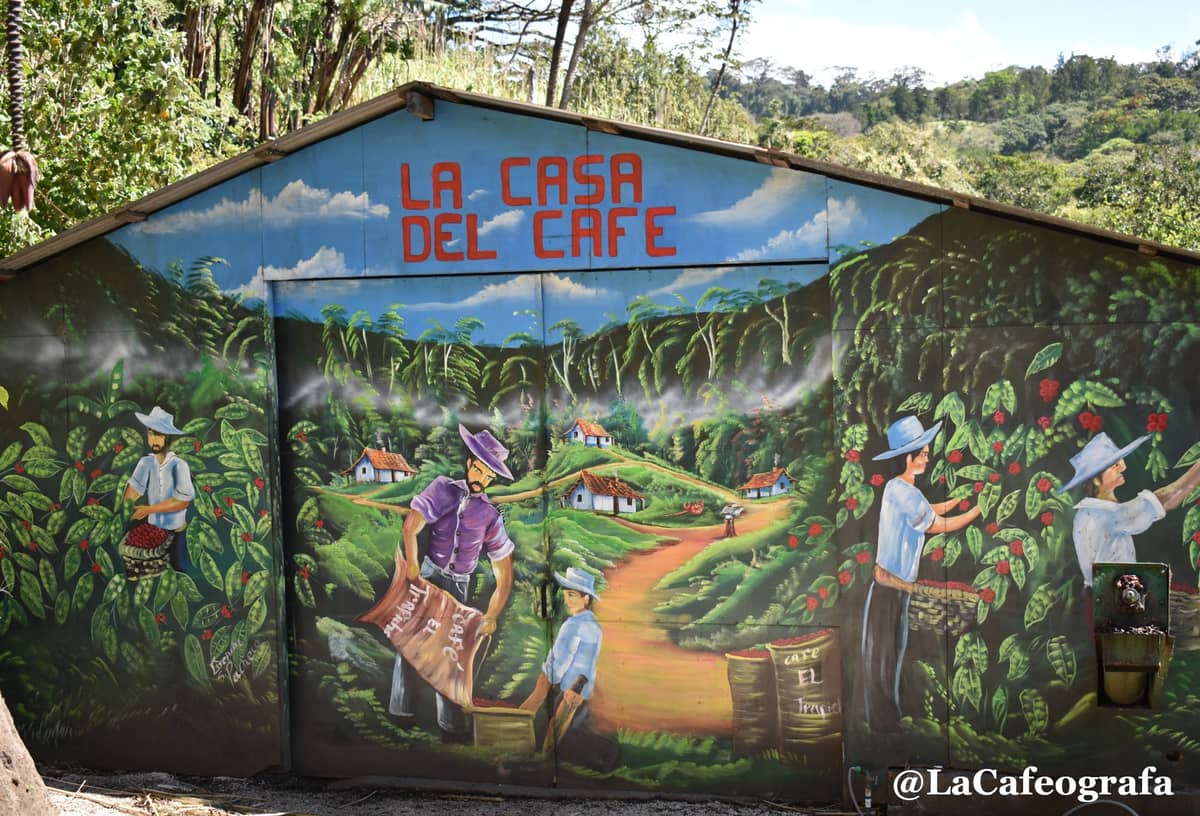
05 Mar 2021
The Costa Rica El Trapiche is not to be missed, because we only managed to get a couple of kilos of this incredible coffee. It's from a region you've probably never heard of called Monteverde, and mainly because coffee grows at a lower altitude and in an oceanic climate. Their farm is around 1300masl and grows micro-lots of different varieties such as Caturra, Catuaí, Costa Rica 95, Geisha, Pacamara, Sarchimor and SL28. The producers, Diego Santa Maria & Mauricio Serrano managed to create an incredible cup profile with notes of passionfruit, orange liquor, mango and strawberry! It is a natural processed Caturra, where the cherries have been put through Carbonic Maceration before drying.
"El Trapiche is a third-generation family farm that grows sugar, cacao, coffee and other fruits."
Monteverde is located on the side of the highway going towards the Costa Rican Pacific beaches and behind the curvy mountains that suddenly appear on the road. Coffee has always been cultivated here, although this region has always been known for tourism and the locals have dedicated themselves to that. Monteverde is a micro-region that according to the division of provinces belongs to Puntarenas, but it's mostly in Guanacaste.
El Trapiche is a third-generation family farm that grows sugar, cacao, coffee and other fruits. The farm began in 1948 when Higinio Santamaría arrived in Monteverde with his family in search of a quiet place to work. It was there that he and some neighbours installed a mill and dedicated themselves to the sugar cane process (Trapiche). In 1950 Juan Santamaría Campos (Higinio's son) and his children began to plant coffee on the farm with Caturra and Catuaí varieties. During this time, the coffee collected was used for family consumption and then it was sold to two nearby cooperatives, Coope Santa Elena R.L and Coopeldos R.L.
In 2005 they began doing tourism-based tours of their farm to generate extra income. With that benefit, the current owner (grandson of the founder) decided to invest it in experimental processing trials where they eventually mastered utilising carbonic maceration and more classic anaerobic fermentations.
Like a lot of coffee growers, the farm was selling the coffee cherries to other buyers. But in 2006, they started a micro-mill where they have laboured ever since working to perfect their coffee. Their whole system allows the classification of the beans by first, second and third quality. For that matter they use machines (zarandas) that sort them by density, bean size and shape.
From 2015, they started focusing more on processes such as washing, honey and natural, but with a focus on controlled fermentations. In 2018 they began to investigate aerobic and anaerobic fermentation, and they decided to go a little further and start the carbonic maceration process for the first time in the country.
They obtained incredible results in 2020 and placed second place in the Sintercafe (International Coffee Week, developed by Specialty Costarican coffee Association), and also got first place in the Early Harvest event organised by the Costarican Coffee Institute and the Costarican Specialty coffee Association, with one of their carbonic maceration coffees.
